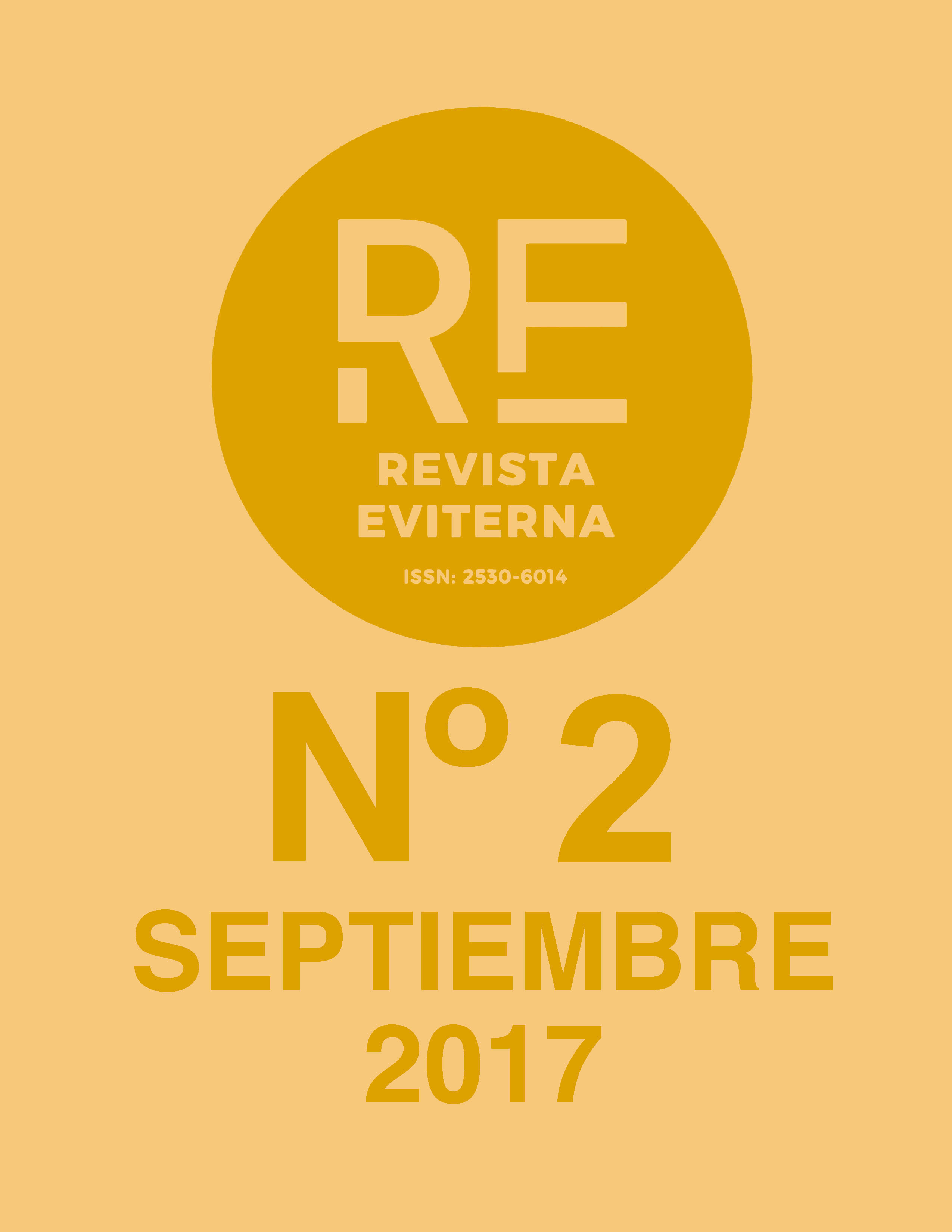Cartel soviético de la época postrevolucionaria (1917-1932)
DOI:
https://doi.org/10.24310/Eviternare.v0i2.8124Palabras clave:
Propaganda; Revolución; Arte Gráfico; Icono; LubokResumen
Este artículo tiene como objetivo acercar al lector al cartel soviético como forma de expresión artística. Para comprender la relevancia del cartel soviético es necesario hacer una aproximación al contexto en el que se desarrolla. Los artistas se encuentran al servicio del Estado y su función es hacer llegar su mensaje a toda la población. El arte gráfico soviético destaca por el empleo de cartel de agitación como medio para difundir la ideología bolchevique, y como toda forma artística, tiene unos antecedentes, en ocasiones, inesperados. El arte tradicional ruso se convierte en el punto de partida para el desarrollo de los carteles. Los artistas se sumergen en la investigación y redescubrimiento de sus propias raíces, potenciándolas y reforzándolas y, de este modo, se produce un acercamiento a la sociedad rusa a través de elementos que ya conocen.
Descargas
Métricas
Publicación Facts
Perfil de revisores N/D
Información adicional autores
Indexado: {$indexList}
-
Indexado en
- Sociedad Académica/Grupo
- N/D
- Editora:
- Universidad de Málaga
Citas
ANDREEVA, Yulia (2009), “Judozhestvennie osobennosti lubochnij tekstov”, Vestnik KGY N.A Nekrasova, nº3, p. 195-198.
ARAGON, Louis y BRETON, André (1978). Surrealismo frente a Realismo Socialista. Tusquets Editor: Barcelona.
BARNICOAT, John (1972). Los carteles. Su historia y lenguaje. Gustavo Gili: Barcelona.
BOZAL, Valeriano (1978). El arte del siglo XX. La construcción de la vanguardia (1850-1939). Vol. 1. Cuadernos para el Diálogo: Madrid.
BÜCHTEN, Danielle (2013). Propaganda! Russian and Norwegian Posters 1920-1939. National Library of Norwegian: Oslo.
CHAUS, Nadezhda (2010), “Sovetskie plakati 1917-1920. Osnovnoe sredstro propagandi sochialisticheskoi ideologii”, Sotsialno-ekonomicheskie iavlenia y progressi, nº 6, pp. 220- 223.
GREY, Camilla (1986). The Russian Experiment in Art 1863-1922. Thames and Hudson: Londres.
HILTON, Alison (2011). Russian Folk Art. Indiana University Press: Bloomington, Indiana.
KENEZ, Peter (1985). The Birth of the Propaganda State: Soviet Methods of Mass Mobilization,1917- 1929. Cambridge University Press: Londres.
KOMUNISTICHESKAIA AKADEMIA (1932). Za bolshevistski plakat. Ogiz-Izogiz: Moscú- Leningrago.
KURZ MUÑOZ, Juan Alberto (1991). El arte en Rusia. La era soviética. Instituto de Historia del Arte Ruso y Soviético:Valencia.
LECLANCHE-BOULÉ, Claude (2003). Constructivismo en la URSS. Tipografías y fotomontajes. Campgrafic: Valencia.
PAPAIOANNOU, Kostas (1968). Pintura bizantina y rusa. Aguilar: Madrid.
POLONSKY, Viatcheslav (1925). Russkii rebolutsionnii plakat. Gosudarstvennoe izdatelstvo: Moscú.
RENAU, Josep (1976). “El cartel político”, Función social del cartel. Fernando Torres Editor: Valencia.
TARABUKIN, Nikolai (1923). Ot molberta do mashini. Rabotnik Prosveschenia: Moscú.
TOLSTOI, Vladimir (2010). Judozhestvennaia zhizn sovetskoi Rossii 1917-1932. Sobitia, fakti, kommentarii. Sbornik materialov y documentov. Galart: Moscú.
TUPITSYN, Margarita (1996). “Abandono de la vanguardia: imaginería soviética bajo Stalin”, Utopia, ilusión y adaptación. Arte soviético 1928-1945. Instituto Valenciano de Arte Moderno: Valencia.
Descargas
Publicado
Cómo citar
Número
Sección
Licencia
Todos los contenidos publicados en Revista Eviterna están sujetos a la licencia Creative Commons Reconocimento-NoComercia-Compartirigual 4.0 cuyo texto completo puede consultar en <http://creativecommons.org/licenses/by-nc-sa/4.0>

Se pueden copiar, usar, difundir, transmitir y exponer públicamente, siempre que:
- Se cite la autoría y la fuente original de su publicación (revista, editorial y URL de la obra).
- No se usen para fines comerciales.
- Se mencione la existencia y especificaciones de esta licencia de uso.
Los derechos de autor son de dos clases: derechos morales y derechos patrimoniales. Los derechos morales son prerrogativas perpetuas, irrenunciables, intransferibles, inalienables, inembargables e imprescriptibles.
De acuerdo con la legislación de derechos de autor, Revista Eviterna reconoce y respeta el derecho moral de los autores/as, así como la titularidad del derecho patrimonial, el cual será cedido a la Universidad de Málaga para su difusión en acceso abierto.
Los derechos patrimoniales, se refieren a los beneficios que se obtienen por el uso o divulgación de las obras. Revista Eviterna se publica en open access y queda autorizada en exclusiva para realizar u autorizar por cualquier medio el uso, distribución, divulgación, reproducción, adaptación, traducción o transformación de la obra.
Es responsabilidad de los autores/as obtener los permisos necesarios de las imágenes que están sujetas a derechos de autor.







12.png)



